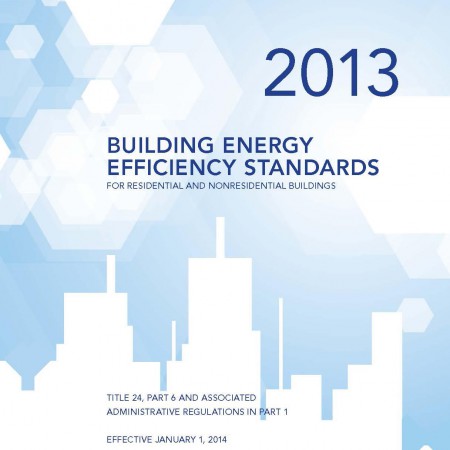Beware, The New Title 24 2013 Requirements Are Upon Us! (Updated*)
*Or not, since on December 11, 2013, the California Energy Commission has decided to postpone the implementation until July 1st 2014.
While the new standards are estimated to reduce energy consumption by 25% for residential and 30% for commercial buildings, the impacts design are pretty significant. Lighting is said to currently account for approximately 30% of California’s electricity use. So, you know this will affect your project’s lighting design, but how?
Generally speaking, it is estimated that lighting systems will be hit with an up-front cost increase of approximately 30%. Namely due to the once optional, now required adaptive lighting for both interiors and exteriors. Of course, these measures will end up saving the client money they would have spent on power consumption in the long run. Many retrofit projects and residential spaces that were once excluded from Title 24 compliance will now need to meet the energy standards as well.
These changes are increasing the need for a control strategy using specific technologies and coordination between disciplines much earlier on in the design process than we may have in the past. Design teams will need to ensure that both the code and the client are satisfied with the performance of their lighting system and how it works within their project.
Non-Residential Interior Lighting Impacts:
Daylighting controls are now required on a basis of electrical load as opposed to square footage alone. Any interior daylit space with a lighting load of 120W or higher will have to be dimmable via daylight sensor. This change will affect nearly every commercial space with skylights or windows with minimal exemptions.
Occupancy sensors are now required in corridors, aisles, library stacks, and stairwells, as well as open warehouses areas. These controls will have to reduce lighting loads by at least 50% when the space is not occupied. Many areas such as storage, restrooms or support spaces are required to have occupancy or vacancy sensing controls as well, as opposed to a timeclock or open-loop photocell control.
Along with other sources, track lighting will also be required to dim/shed lighting loads, while maintaining uniformity.
Demand response compatibility, although not commonly in practice under the current code, will now be required for any commercial building at 10,000 square feet or larger. Demand response control systems will automatically adapt the lighting to a lower energy consumption level when signaled to do so by the local utility. This will add further coordination between the lighting controls with other building systems controls as well as with the utility for compatible systems.
Covered parking and parking garages are now also classified as interior spaces and must meet the same adaptive lighting requirements, with the additional of occupancy and daylight controlled luminaires. Parking garages are now also limited maximum of 500W per occupancy sensor.
Exterior Lighting Impacts:
Parking lots, and loading / unloading areas are also required to have occupancy controls under the new standard, with the ability to shed between 20%- 50% of input power per fixture. A/B switching of lamps or “checker-boarding” of circuits will no longer be an allowable means of achieving this load shed.
All outdoor lighting must now have both a photocell control and an automated control system.
Lighting mounted at 24 feet above the ground or lower, as well as all incandescent luminaires over 100 watts will also be required to have a motion sensor control. Each luminaire must be able to reduce lighting loads by at least 40% when the lighting is not required.
All luminaires up to 150W, regardless of location, must comply with the IESNA’s BUG standards (actually only uplight and glare). With the goal of minimizing light trespass, light pollution and glare hazards.
Residential Lighting Impacts:
Residential projects and spaces are seeing an increase in required controls and better efficiencies as well. The use of high-efficacy sources will now be a requirement. As well as vacancy sensors and controls in restrooms and storage/support spaces. Residential daylighting is also addressed, calling for high performance skylights and glazing.
Even LED retrofit lamps for residential are being held to a higher criteria, with a requirement for 90 CRI+ and warm kelvin temperatures between 2700K-3000K. (While we understand the idea to not recreate the low quality CFL fiasco, but do we really need the state to tell us what color temperature I should be using?)
Retrofit Lighting Impacts:
One of the biggest changes to the code is the narrowing of exemptions for retrofit projects. Retrofit projects where 10% or more of the lighting is being changed, or 40 or more ballasts are being replaced will now have to comply with the standards Lighting Power Densities as well as adaptive controls such as dimming.
2013 Title 24 Standards can be downloaded from the California Energy Commission Website.
So when you have a project in California that is going to plan check after January 1st, 2014, July 1st 2014, please make sure that you:
- Allocate additional budget for lighting, and
- Hire a qualified lighting designer (we know of one) who will provide you with lighting that complies with code, while providing the comfort, safety and aesthetics that your project deserves.





